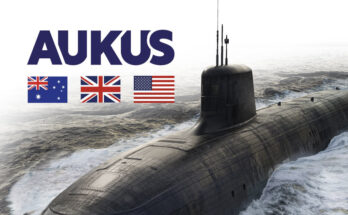Forecast International projects that the U.S. defense electronics market will be worth at least $148.774 billion over the timeframe 2019-2028.
From civil disobedience to full-scale military intervention involving all-out war, the interrelationship of world events continues to increase the critical role of situational awareness on the battlefield. Today, militaries share the front line of defense with intelligence agencies, law enforcement, and emergency services, with budgets reflecting the wide variety of systems and technologies currently available.
“The U.S. defense electronics industry appears to be focused on enhancing, modernizing, and upgrading existing systems while at the same time developing new technologies,” said Richard Sterk, Senior Analyst and editor of Forecast International’s yearly analysis The Market for U.S. Defense Electronics. “Unfortunately, such dual efforts are being hampered by political budget funding shenanigans to such an extreme that the underlying military defense needs have all but been forgotten.”
Forecast International’s projections are the result of a review and analysis of more than 500 leading defense electronics programs. The analysis projects that the top five U.S. defense electronics companies in the coming decade will be Northrop Grumman, Raytheon, Lockheed Martin, Harris, and BAE Systems.
“Thanks to the fact that platforms such as aircraft, ships, and vehicles are being made to stay in service much longer than previous generations,” said Sterk, “the defense electronics industry is benefiting from demands for continual upgrades and retrofits of systems and sensors to keep these platforms at peak operational readiness.”
Programs forecast to be market leaders over the coming decade include the APG-81 AESA radar for F-35 aircraft; the ICNIA (Integrated Communications, Navigation, Identification, Avionics) system that will integrate aircraft avionics for the F-22 and F-35; the APG-68 pulse-Doppler fire control radar for the F-16; the AAQ-33 Sniper Advanced Targeting Pod; the ALQ-210 situational awareness and threat warning system; the SPY-6 Air and Missile Defense Radar (AMDR) to be installed aboard aircraft carriers and destroyers; the AQS-20 minehunting sonar and AQS-22 ALFS (Airborne Low Frequency Sonar) naval systems; the Navy Multi-band Terminal C4I system; the PRC-150 and PRC-152 combat radios; the Bowman radio; and the VAS-5 Driver’s Vision Enhancer for land vehicles.
For 50 years, Forecast International intelligence reports have been the aerospace and defense industry standard for accurate research, analysis, and projections. Our experienced analysts compile, evaluate, and present accurate data for decision makers. FI's market research reports offer concise analysis of individual programs and identify market opportunities. Each report includes a program overview, detailed statistics, recent developments and a competitive analysis, culminating in production forecasts spanning 10 or 15 years. Let our market intelligence reports be a key part of reducing uncertainties and mastering your specific market and its growth potential. Find out more at www.forecastinternational.com




